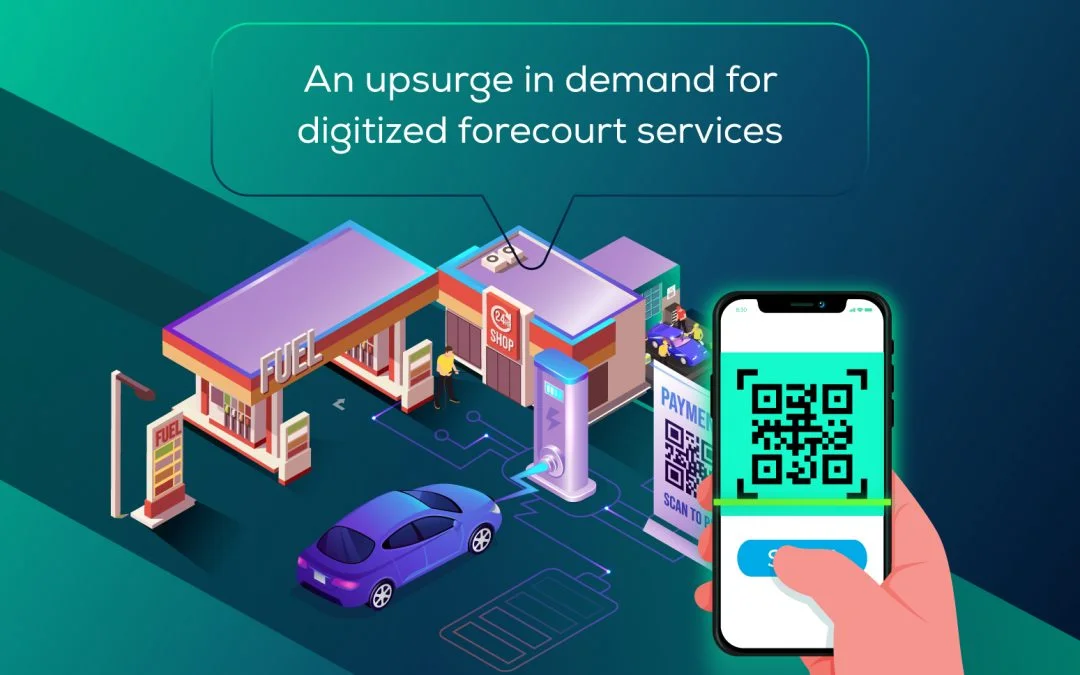- Design industry shaping loyalty programs
- Integrate easily and go live quicker
- Deliver hyper-personalized consumer experiences
Blue Rewards from Al Futtaim Group Shares Loyalty Success Stories and Evolution. Watch Podcast >
Capillary Triumphs with 4 Prestigious Wins at the 2025 International Loyalty Awards! Read more >

One of the largest segments of the Indian retail industry, the petro-retail sector is known to be the most well-organized due to the constant upgradation of its forecourts. Now, due to the massive logistics overhaul of Indian supply chains during the pandemic, there’s been a huge upsurge in demand for digitized forecourt services for both fuel and non-fuel retail offerings. Catering to emerging consumer preferences, the overarching objective of refurbishing the traditional forecourt experience is to not only smoothen mobility for last-mile delivery – accelerated by the pandemic’s e-commerce boom – but to reduce the customer churn for increased profitability. Digital payment being central, the forecourt user experience has transitioned to being omnichannel to offer multiple benefits at once. Below are the key here-and-now trends underpinned by the largest Indian fuel retailers.
Traditional fuel retail services have been on the decline with a significant dip during the pandemic. Hence, it was important for large players to offer value-added non-fuel services. In addition to ATMs and convenience stores at the forecourt, there’s also been an introduction of car wash facilities, eateries and fast food joints. Due to the multiplicity of new services offered, the forecourt is now a center of increased activity beyond the archetypal motor station. The need to enable digital transactions and personalized rewards, then, changed the forecourt experience to being omnichannel entirely. Purchase decisions are aided by communication that flows from one content source to the other across the major digital channels of engagement.
The future of Indian fuel retailing is marked by rampant innovation. To speed up the time-to-market, most small and medium businesses rely on forecourt services that are becoming more sophisticated by the day. From a consumer perspective, non-fuel offerings gained impetus for higher convenience. Stores at the forecourt that offer multiple products through prior browsing enabled by a digital interface (an app) are observing higher sales daily. This is due to the digital transformation brought about by the integration of tech stacks backed by a single source of truth in all customer interactions.
The larger flexibility of paying online has made the forecourt experience entirely cashless and contactless in favor of ease in the new normal. Customers can now pay via any of the UPI apps in addition to opting for card swipes. The seamless transactions facilitated by the flexibility of payment modes ensure that customers can fasten their purchase and get receipts sent directly to their numbers. Digital payments also account for a more transparent data collection that is integral to retargeting customers with timely marketing communications after the purchase is complete. Leading OMCs in India have all integrated digital payments in a cash-rich sector.
On the back of forecourts, the Indian fuel retail sector, which is expected to grow three times in size over the next three years, has adapted to a curated, customized and smart fulfillment that no one could have expected prior to COVID-19. To optimize digital interactions, data analytics and insights get automated through persona mapping to ensure a satisfying experience for all – whether fuel or non-fuel – services at the forecourt. Due to the efficient customer data collection at the source with e-payments – personalized rewards can be activated for different interest-based cohorts to encourage more visits and improve retention over time. Multi-tier point-based incentives that encourage greater earn and burn prove particularly useful as fuel preferences usually stay the same.
In addition to activating loyalty programs, fuel retailers are also opting for insurance enablement. This is a service that has huge pent-up demand in India as it is a hassle to get it done manually. Traditionally, if a vehicle’s insurance expires, the customer has to visit the service center to renew it. Now with digital insurance, it can be activated in only a few steps at the forecourts that provide this service. This allows for a quick and easy solution.
Blockchain and AI can significantly improve fuel station loyalty programs. Due to the preference for digital payments, blockchain and AI are able to create tailor-made solutions that address specific consumer needs. For instance, predictive analytics can determine the best fuel option for a particular customer based on analyzing his vehicle and budget at a forecourt that offers multiple fuels. For the retailer, this is particularly useful to anticipate upcoming demand surges based on fuel preferences tracked in turn. Such an ecosystem facilitates a seamless experience for both parties. You can read more about the changes blockchain technology is bringing to the loyalty stratosphere here.
The forecourt experience in Indian fuel retail is drastically changing. It has been speculated that in the near future, the final frontier of fuel retail innovation would drive to the forecourt to the consumer’s doorstep using advanced technologies. Some of these services would include quick vehicle pick-ups and drops, e-commerce enablement and instant insurance renewal. The great Indian forecourt experience is, thus, one in the making. But one thing is for certain – the transformation is focused on analytics, automation and personalization. These three pillars will determine the growth of the biggest fuel retailers the country banks on. The faster the technology adoption and implementation, the better the financial results. Partnering with the right reward enablers is a must-have in the larger strategy to ensure that customers remain engaged in the long haul. Get in touch with our experts at Capillary to know how fuel retail loyalty programs can enhance the value of digital transformation for your forecourt.

June 10, 2022 | 4 Min Read
One of the largest segments of the Indian retail industry, t